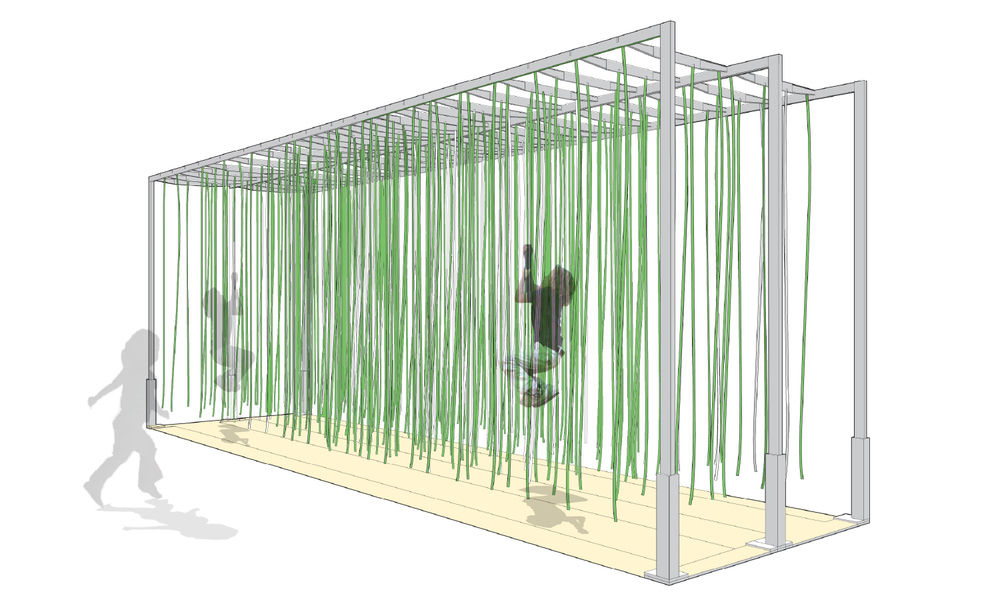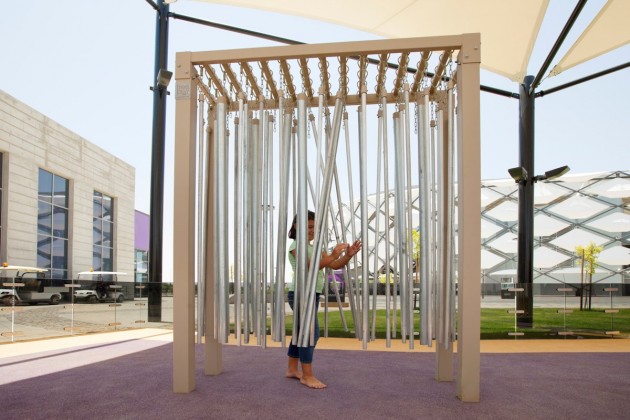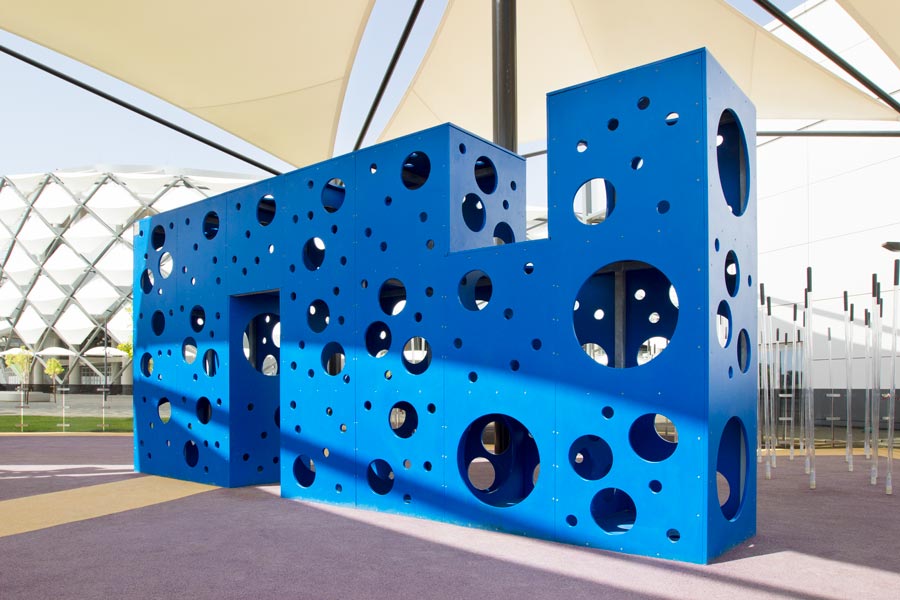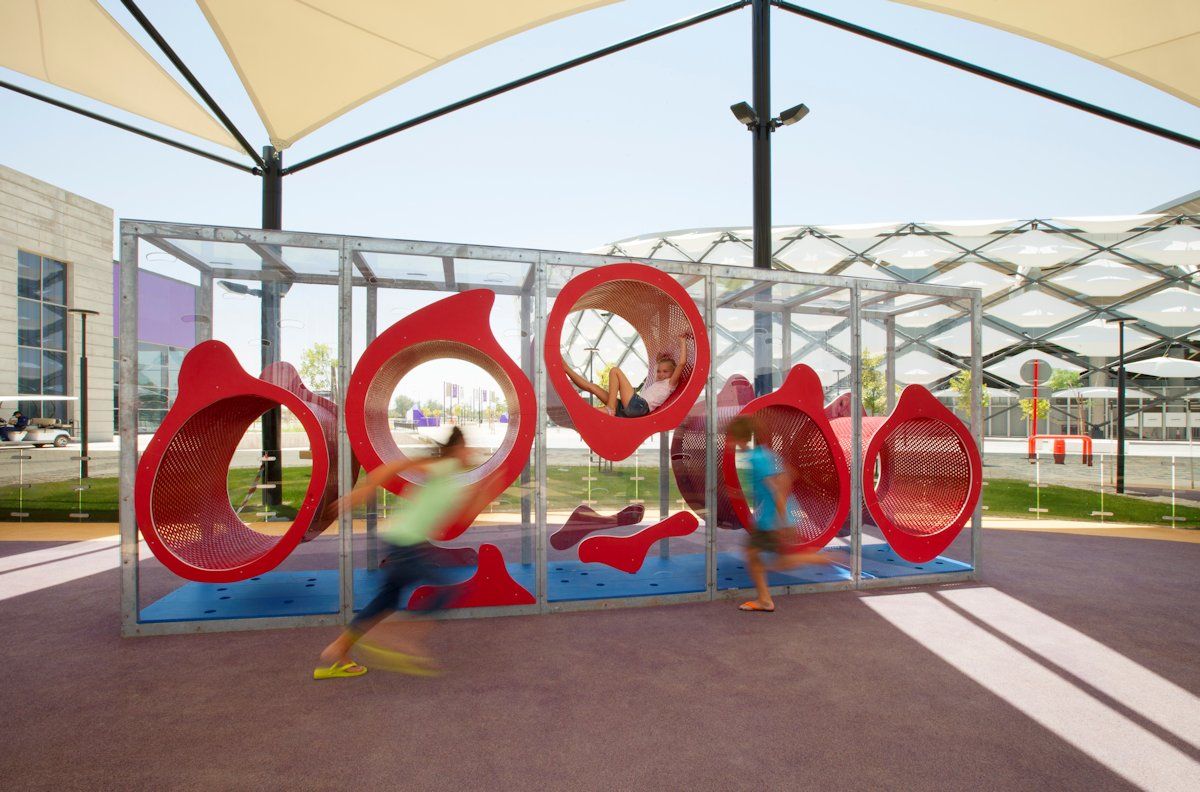Free-Form Play Structures Encourage Creativity

We all know how important it is for kids to get outside and exercise their bodies. Most parents also realize that it is just as important for kids to exercise their minds and grow through creative play. The playgrounds designed by newly-formed design group Free Play are meant to allow kids the kind of unstructured play time that helps foster creativity and imagination.

Free Play was founded by Dan Schreibman, a father who was frustrated at the lack of unique play systems available for kids. He wanted to buy a backyard play set for his own children, but was disappointed to find that they were all basically the same and contained components that had clearly-defined functions. This type of rigid design meant that the play set itself was basically telling the kids how to play rather than letting them come up with their own creative interactions.
Schreibman was inspired by sculptures, architecture, and nature to create play spaces that could be whatever children decided they should be. He conducted extensive research in the areas of architecture and child development, then held a design contest to find a few unstructured sensory play sets that could be installed in public places.
LTL Architects won with their alien-looking designs that are definitely more inviting and imaginative than anything currently in place at the typical playground. They designed four structures that foster child-directed play. The first is Weeping Willow, a ten-foot-tall metal structure with dangling ropes or wind chimes. There are several variations of the design; some let kids climb and swing from ropes and others encourage children to run through the hanging parts to make playful music.
The Maze is a large hole-spotted structure with labyrinthine tunnels inside. Kids can climb through the tunnels and use the holes as escape pods or windows, or the can use them to scale the outside of the structure. The Corn Field features LED-lit vertical objects with no immediately-discernible function; kids decide how to interact with them and bring them to life. The Ant Farm is similarly unstructured, composed of “floating” tubes and other structures. Kids use the play sets in unique ways because no one tells them what the parts are there for.
It’s like giving a child a box and a bunch of toilet paper rolls: they may not mean anything to you, but a child’s imagination can make them come to life as an endless variety of fascinating objects.




